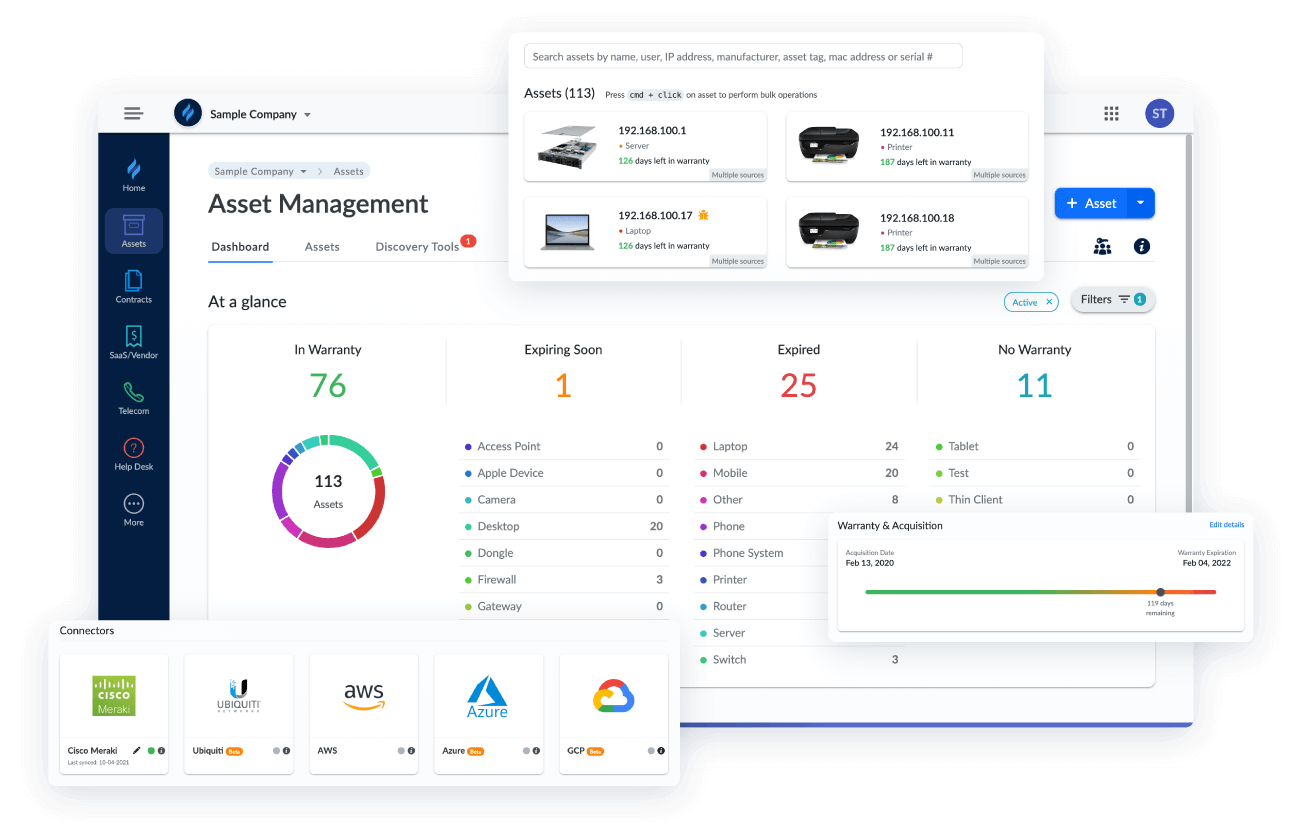Streamlining Operations with IT Asset Management Software: A Complete Guide

Effective IT asset management is critical in today’s digital-first business environment. IT Asset Management (ITAM) software plays a vital role in helping organizations track, manage, and optimize their technology assets throughout their lifecycle. By centralizing data and automating processes, ITAM software ensures that businesses maintain control over their hardware and software resources, reduce costs, and stay compliant with licensing requirements. The demand for robust IT asset management software has surged with the expansion of remote workforces, cloud infrastructure, and increasingly complex IT environments.
ITAM software enables businesses to track both physical and digital assets, including desktops, laptops, servers, mobile devices, and software licenses. This centralized approach eliminates the inefficiencies and inaccuracies of manual tracking methods. With real-time visibility into asset location, usage, and condition, organizations can make informed decisions about upgrades, replacements, and disposals. Such data-driven insights help reduce downtime and optimize IT investments. Moreover, ITAM tools assist in ensuring compliance with software licensing agreements, which helps avoid costly penalties due to overuse or underuse of software licenses.
Another key benefit of IT asset management software is its role in lifecycle management. From procurement and deployment to maintenance and disposal, ITAM software tracks every stage of an asset’s life. This ensures that equipment is maintained according to schedule, warranties are honored, and end-of-life procedures are followed securely. By aligning IT asset strategies with organizational goals, businesses can extend asset lifespans and maximize return on investment. Furthermore, automation features within ITAM systems significantly cut down on manual administrative work, enabling IT teams to focus on strategic initiatives.
Security is a major concern for any organization, and IT asset management software supports cybersecurity by maintaining an up-to-date inventory of assets. With a clear picture of what hardware and software are in use, IT departments can quickly identify unauthorized devices or unpatched applications that could pose security threats. Integration with cybersecurity tools enables faster threat detection and response. Additionally, ITAM platforms support regulatory compliance by maintaining detailed records of asset histories and software usage, which can be critical during audits or assessments.
Modern ITAM solutions often integrate with other enterprise systems such as configuration management databases (CMDBs), help desk software, and enterprise resource planning (ERP) platforms. This seamless integration ensures that all departments are aligned and that data flows efficiently between systems. For example, integration with help desk platforms allows for better incident and problem management by linking IT issues directly to specific assets. This level of transparency and interconnectivity enhances operational efficiency across the organization.
The rise of cloud-based IT asset management software has revolutionized the field. Cloud ITAM solutions offer flexibility, scalability, and ease of access, particularly beneficial for organizations with remote or hybrid teams. These platforms often include mobile access and automated discovery tools, making it easier to monitor assets across various locations and networks. Additionally, cloud ITAM tools typically provide regular updates, enhanced security features, and low upfront costs, making them an attractive option for businesses of all sizes.
IT asset management is also becoming increasingly important for sustainability initiatives. Proper tracking and management of IT assets help organizations reduce e-waste by ensuring devices are reused, recycled, or disposed of responsibly. By managing assets efficiently, companies not only cut operational costs but also contribute to environmental goals. Some ITAM platforms now include sustainability metrics and reporting features to support green IT strategies. This reflects a growing emphasis on environmentally responsible technology management in the corporate world.
Choosing the right IT asset management software requires careful consideration of an organization’s specific needs. Key features to look for include automated asset discovery, license management, hardware and software tracking, customizable reporting, and integration capabilities. Scalability is also e ssential, as the IT landscape continues to evolve rapidly. Whether a business is a small startup or a large enterprise, investing in a reliable ITAM solution is a strategic move that can drive efficiency, ensure compliance, and support long-term growth.
Source - https://www.marketresearchfuture.com/reports/it-asset-management-software-market-920
IT asset management software is a critical tool in modern enterprise operations. It provides centralized control over hardware and software assets, supports compliance and security, improves efficiency, and contributes to sustainable IT practices. As technology continues to advance and businesses grow more reliant on digital infrastructure, the role of ITAM software will only become more pivotal. Organizations that prioritize IT asset management are better positioned to adapt to change, reduce risk, and achieve operational excellence in a competitive marketplace.
- Art
- Causes
- Crafts
- Dance
- Drinks
- Film
- Fitness
- Food
- بازی ها
- Gardening
- Health
- خانه
- Literature
- Music
- Networking
- دیگر
- Party
- Religion
- Shopping
- Sports
- Theater
- Wellness
